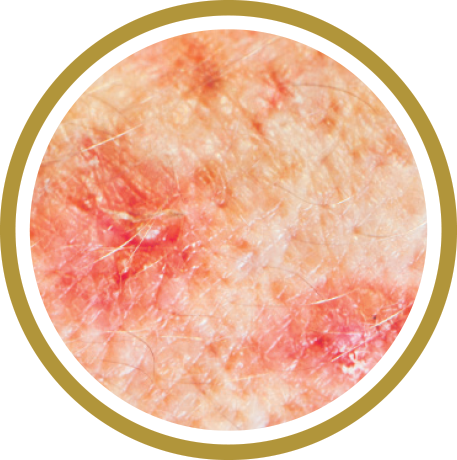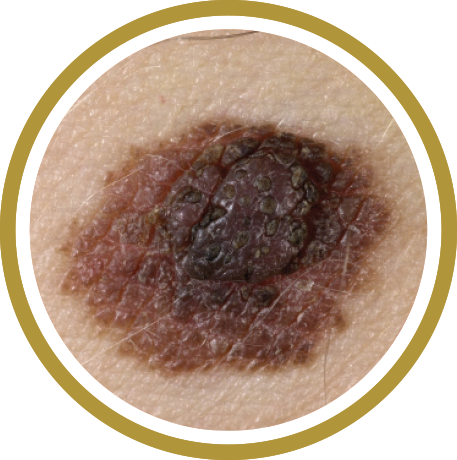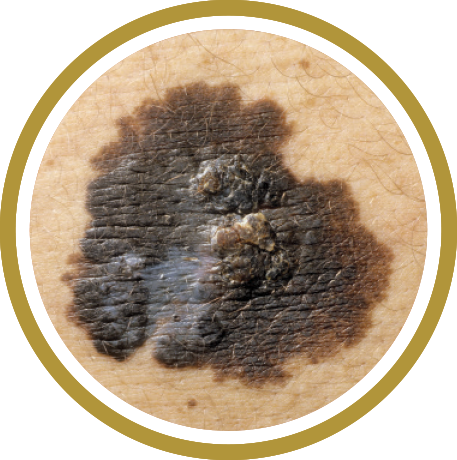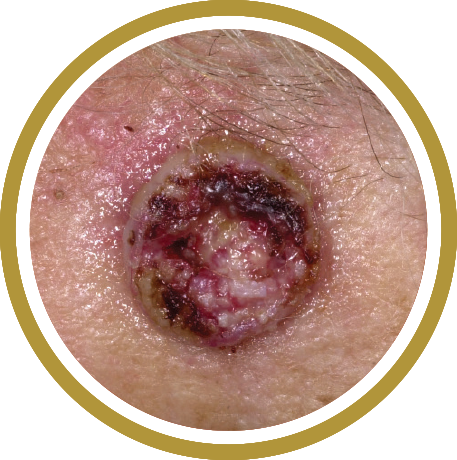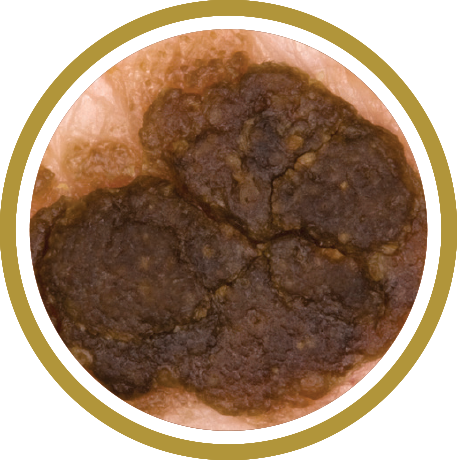Basal Cell Carcinoma
Basal cell carcinoma is the most common form of skin cancer. Though it typically occurs in older individuals, it is now occurring more often in young adults and children.Appearance
Basal cell carcinoma occurs most frequently on sun-exposed regions of the body, such as the face, lips, ears, neck, scalp, forearms, and backs of hands. Its appearance can take several different forms on your skin. Some warning signs to look for are an open sore, a reddish patch, a growth with an elevated border and a central indent, a bump or nodule, or a scar-like area.Learn how to examine your skin
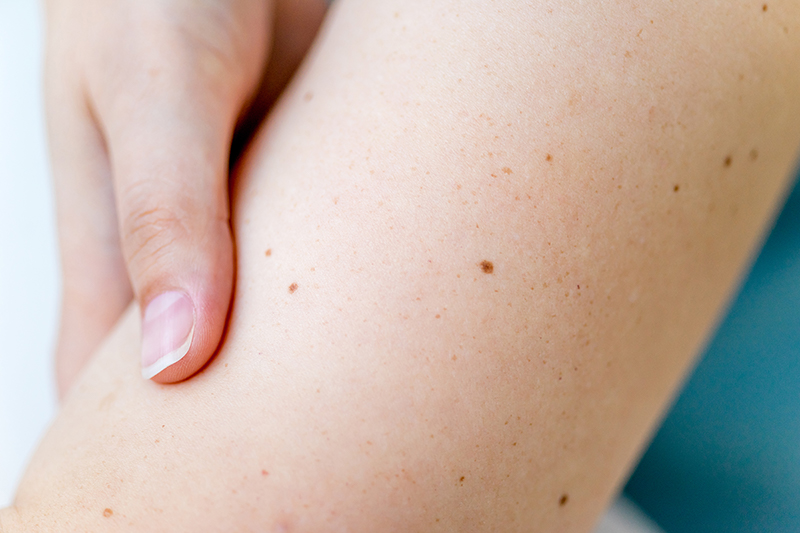
Risk factors of basal cell carcinoma
- Overexposure to sunlight
- Fair skin, light hair and eye color
- Burns, exposure to radiation, arsenical intoxication, or chronic dermatitis
- A personal history of basal cell carcinoma


